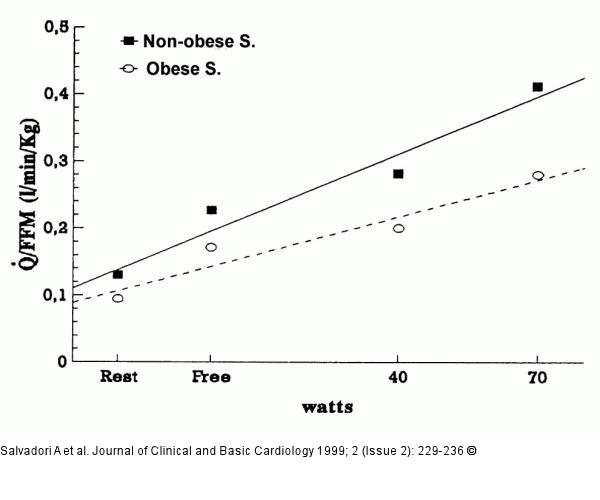Salvadori A, Arreghini M, Bolla G, Fanari P, Giacomotti E, Longhini E, Miserocchi G, Palmulli P Cardiovascular and adrenergic response to exercise in obese subjects Journal of Clinical and Basic Cardiology 1999; 2 (2): 229-236 PDF Summary Overview
| ||||||||||||||||
Figure/Graphic 4: Blutfluß - Adipositas Blood flow per unit body fat-free mass (Q·/FFM) plotted vs. mechanical power output in control and obese subjects. The regression was: Q·/FFM = 0.169 + 0.003 watt - 0.045Z - 0.001 wattZ (R2: 0.69; F: 53; MSE: 0.004), with a dummy variable Z= 1 for the obese subjects and 0 for the non-obese subjects. The regression for obese subjects displays a significantly lower slope compared to controls (p < 0.05). |

Figure/Graphic 4: Blutfluß - Adipositas
Blood flow per unit body fat-free mass (Q·/FFM) plotted vs. mechanical power output in control and obese subjects. The regression was: Q·/FFM = 0.169 + 0.003 watt - 0.045Z - 0.001 wattZ (R2: 0.69; F: 53; MSE: 0.004), with a dummy variable Z= 1 for the obese subjects and 0 for the non-obese subjects. The regression for obese subjects displays a significantly lower slope compared to controls (p < 0.05). |







